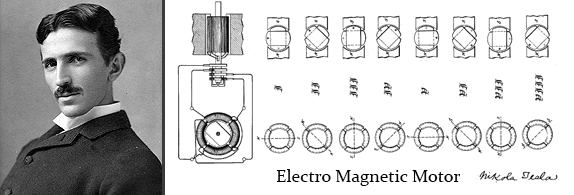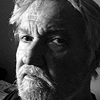
I have been reading about the new Tesla Model S electric car, and its $62,400 price tag and I was drawn back to 1931 when Nikola Tesla, the man whose name adorns their car, took the gasoline engine out of a Pierce-Arrow and replaced it with an 80-horsepower alternating current (A.C.) air-cooled motor with no obvious external source of power.
At a local radio shop he bought twelve vacuum tubes, some wires and assorted resistors, and assembled them in a circuit box 24-inches long, 12-inches wide and 6-inches high, with a pair of 3-inch rods sticking out. Getting into the car with the circuit box in the front seat beside him, he pushed the rods in, and announced, “We now have power,” and proceeded to test drive the car for a week, often at speeds of up to 90 mph.
Everyone wanted to know where the power came from?
Popular responses included charges of “black magic,” and the sensitive genius was offended by these skeptical comments from the press. Several newspapers in Buffalo reported this test. When asked where the power came from, Tesla replied, “From the ethers all around us”. Several people suggested that Tesla was mad and somehow in league with sinister forces of the universe. He removed his mysterious box, returned to his laboratory in New York—and the secret of his power source died with him.
Some call Tesla the greatest scientific mind who ever lived. Working on his own, Tesla conceived and built the first working A.C. generator. He, and he alone, is responsible for all of the advantages we enjoy today because of A.C. electric power. In 1895 George Westinghouse bought the rights to his turbines for $15 million and installed them in Niagara Falls, and New York City had light.
There had been early electric cars, but by 1915 they were a memory. In 1931 there was new interest in electric cars, but mostly those, like the modern Tesla, ran on D.C. power, which is supplied from batteries.
The problem with the early battery-driven electric cars, just like today’s cars, is that the batteries need recharging each night. About 100 miles per charge is top range. Tesla’s Pierce-Arrow conversion could run forever, and it used no batteries. Tesla had been working to demonstrate that the earth was enveloped by a constantly activated electrically charged field of energy and that we could tap into it as a source of power.
In an article that appeared on May 5, 1904, the Yugoslavian-born scientist explained to the readers of the prestigious trade journal “Electrical World & Engineering” that the modern age had arrived. From that time on, he assured them, the use of wires to transmit signals anywhere on the globe would be unnecessary! “Not only was it practicable to send telegraphic messages to any distances without wires, as I recognized long ago,” he wrote, “but also to impress upon the entire globe the faint modulations of the human voice, far more still, to transmit power, in unlimited amounts to any terrestrial distance and almost without loss.”
The inventor envisioned a system that would literally transmit alternating current through the airwaves to anyplace on the globe, where a porch light equipped with a transistor receiver could tap into this current any time the switch was thrown, and it would do it without wires. Or a car equipped with an A.C. electric motor that required no external source of energy. But this was far too radical for the power moguls who wanted the electric meter to be as ubiquitous as the coal bin was in Tesla’s time.
Now before you dismiss the idea of a magnetically run motor—a free energy source, consider the following: Engineers of Hitachi Magnetics Corp. of California have stated that a motor run solely by magnets is feasible and logical but the politics of the matter make it impossible for them to pursue developing a magnet motor or any device that would compete with the energy cartels.
When Tesla died in New York in 1943, the U.S. government confiscated his meager notebooks. Tesla understood the future all too well; he was famous for lodging complex plans in his head, as he did not want his discoveries misused by power-stricken governments. They cremated Tesla along with his most profound thoughts—as well as his dream of advancing humanity.
Of course, Tesla’s dream is still our dream. The future was here once before and we let it get away. As someone wrote not long ago, we can only move forward, it seems, by going back to that future.



Responses to “Driving on Alternating Current”